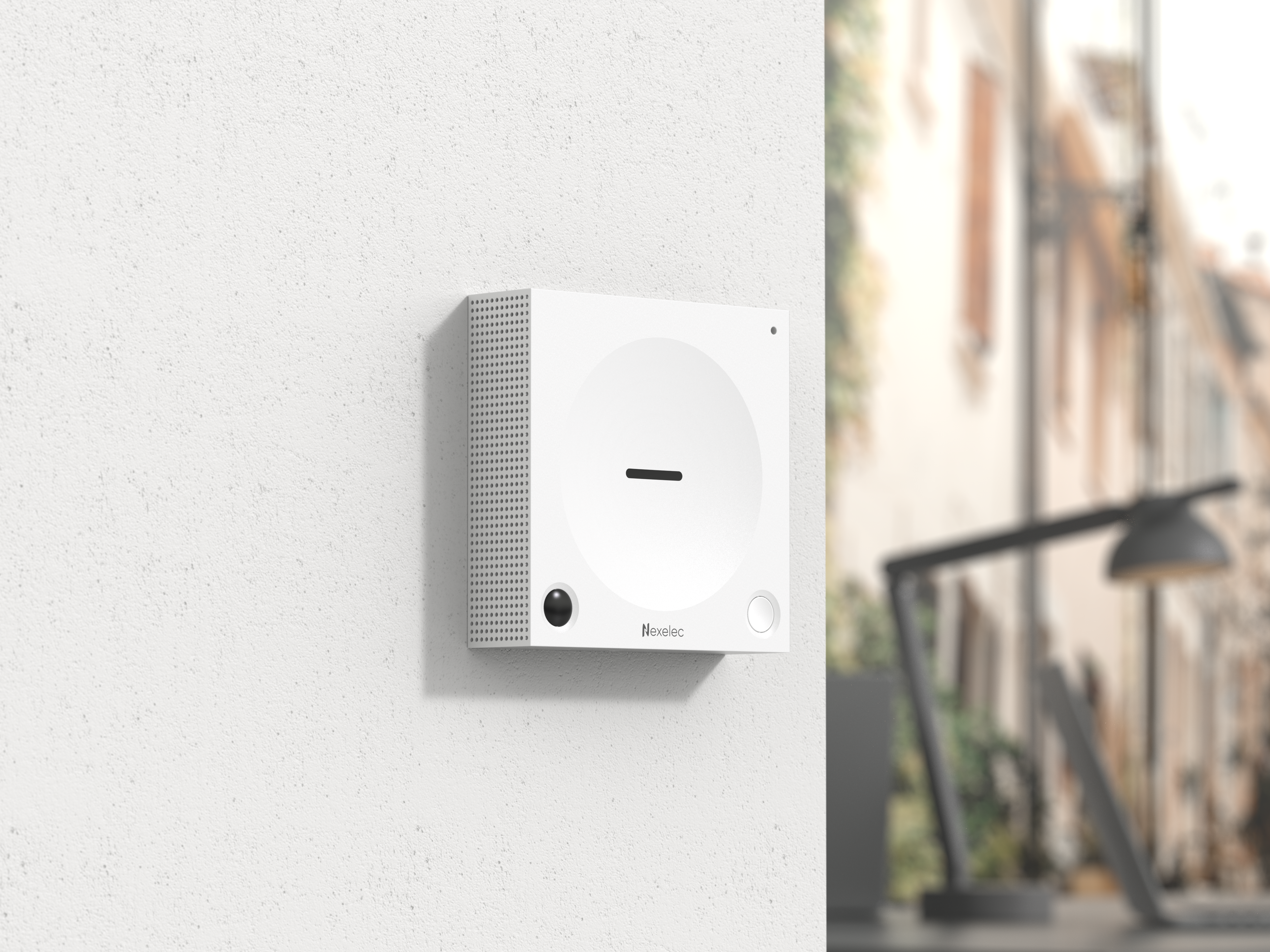All you need to know about measuring ambient parameters
Measuring ambient parameters can help you to evolve in a healthy environment: learn to know and use your product optimally with our advice.

Temperature and humidity measurement
Moisture comes from a variety of sources, including human activity, breathing and architectural design problems. Air that’s too dry dries out the respiratory tract, and humidity that’s too high promotes allergies. Ideally, the humidity level in an enclosed space should be between 40% and 60%.
Measuring temperature in indoor environments is important for several reasons:
- Thermal comfort: Temperature plays a crucial role in the comfort of the occupants of an indoor space. An environment that is too hot or too cold can affect people’s well-being and productivity
- Health: Extreme temperatures can have adverse effects on health. Temperatures that are too high can lead to dehydration and exhaustion, while temperatures that are too low can cause hypothermia. Temperature monitoring is therefore important to ensure healthy living conditions
- Energy efficiency: Maintaining the right temperature optimizes the energy efficiency of heating, ventilation and air-conditioning (HVAC) systems. Accurate temperature monitoring allows these systems to be regulated appropriately, avoiding excessive energy consumption
Noise measurement
To reduce noise pollution, it is useful to implement corrective measures:
- Use quiet machines
- Soundproof premises or buildings
- Equip occupants with earplugs
- Create isolated areas for noisy calls or machines.
NEXELEC noise and sound level sensors help reduce noise pollution in indoor spaces.
Generally speaking, at 80 dB and above, the danger threshold is considered to have been reached after 8 hours of noise exposure. Above 130 dB, any exposure to noise, even short-term, is considered highly harmful.
NEXELEC noise sensors measure the sound environment in interior spaces, helping to ensure the well-being of occupants.
Poor noise management will also have an impact on occupants’ concentration levels, influencing their alertness too. The impact is not only physical, but can also be psychological. Studies show that exposure to noise increases levels of the stress hormone cortisol. This can lead to increased anxiety, fatigue, depression and even sleep disturbance.
NEXELEC noise sensors enable you to effectively monitor the sound environment in indoor spaces.
Noise is a constant feature of everyday life. But unfortunately, it can be harmful to humans. In France, 3 million employees are exposed to excessive noise levels in the workplace. Without realizing it, hearing loss can set in very quickly and lead to deafness.
To anticipate these risks, NEXELEC noise sensors help you keep an eye on the noise level around you on a daily basis, in a preventive manner.
Brightness measurement
In any indoor environment, lighting plays a crucial role in the productivity, concentration and well-being of occupants. Good lighting can boost energy, improve mood and reduce eyestrain.
Measuring brightness is therefore essential to guarantee the visual comfort, safety, energy efficiency and functionality of interior spaces.
There are several ways to improve light levels:
Maximize natural light: make the most of natural light by positioning desks close to windows and using skylights where possible. Natural light helps regulate our circadian rhythm and raises our alertness level.
Choose the right artificial lighting: if you need artificial lighting, opt for energy-efficient LED bulbs, which provide white, natural light. Make sure, too, that light intensity is adjustable to suit different tasks and individual preferences.
Avoid glare and reflections: computer screens can generate annoying glare and reflections. Use blinds, anti-glare filters or adjust screen orientation to minimize these distractions and reduce eyestrain
Provide well-lit break areas: pay particular attention to the brightness of break and relaxation areas. Well-lit areas promote relaxation and help reduce occupant stress. Consider using soft, warm lighting to create a soothing atmosphere.
Ensure even lighting throughout the space: make sure lighting is evenly distributed throughout the interior space to avoid dark or overexposed areas. Uniform lighting helps maintain a pleasant, balanced atmosphere
NEXELEC brightness sensors help to achieve comfort objectives in interior spaces.
Presence measurement
Measuring occupancy rates is essential for the smooth running of interior spaces. Measurements can be analyzed to make informed decisions: optimize space layout, identify under-used or overcrowded areas, and adjust resources according to actual needs.
With NEXELEC presence sensors, you can maximize space efficiency, reduce costs and enhance the occupant experience.
Presence sensors contribute to energy savings by detecting the presence or absence of people in a space. This means that lighting, heating, ventilation and other systems can be automatically adjusted according to this detection.
By reducing unnecessary energy consumption, NEXELEC presence sensors contribute to significant energy savings and lower energy costs.
A presence detector is a device that detects the presence of people in a given area for a defined period of time. NEXELEC presence sensors are designed to react quickly to movements and provide precise data on the actual occupancy level of spaces.